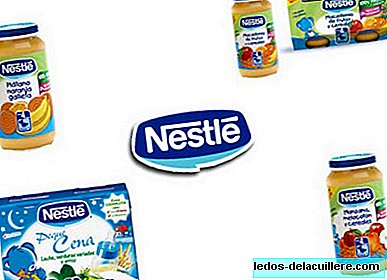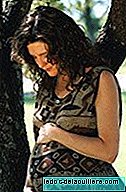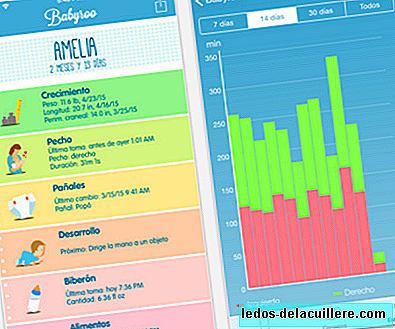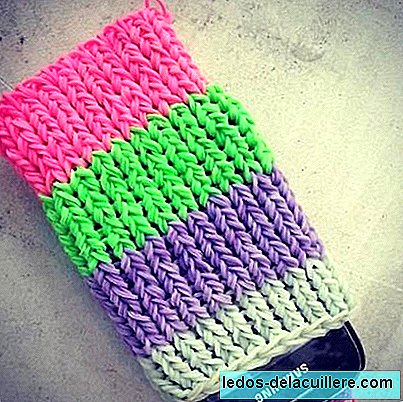
We finish today the series of entries in which we talk about the products of Nestlé Stage 1 with what we can observe when looking at the labeling of fruit jars with cereals and those destined for dinner for babies, which contain milk, vegetables and rice.
"Stage 1" of the feeding begins for Nestlé at 4 months. As I have already commented, the ideal is that this stage will begin at 6 months for babies to drink six months of exclusive milk, either maternal or artificial.
The objective of this entry (and of the previous ones) is to look for the possible “buts” of this type of products (the benefits can be read on the same Nestlé website), so that parents have the information on the table and decide what do.
As I said in the first entry, it is about feeding that can be offered to babies, but in some situations they involve allergy risks or are not recommended for separating milk (If a 4-month-old baby fills the stomach with juice, he is not drinking milk, nutritionally more complete and caloric) or by bringing some improvable ingredient. Better labeling or production without traces of milk or with better ingredients would make these foods a healthier alternative.
Fruit and cereal jars
For those who want to offer babies fruit and cereals at the same time, Nestlé offers parents different cups with different fruit and cereal mixes.
These pots should never be offered at the start (the first times a baby tastes a food). It is recommended that each new food be offered separately and not be given a new one until after 5-7 days, so that in case of allergic reaction the cause can be known. If we start a small jar with several fruits and cereals and a reaction occurs, we will not know what the guilty ingredient is.
At the level of flavor, as I said in the complementary food entry for the fruit, mixing the taste of the fruit with that of the cereals, sweeter, can lead a child to think, believe or want the fruit to know cereal.
In other words, if we accustom a baby so that the fruit tastes sweet it does not learn or get used to the true taste of the fruit and it is possible that when we offer it “dry stick” fruit, it may reject it because it feels too acidic, bitter or sour
That of fruit and cereal salad It contains fruits (apple, banana, orange, pineapple and peach) and 6% cereals (rice flour and hydrolyzed rice flour), corn starch and vitamin C.
The peach is a fruit of the Rosaceae family, which are the most allergenic. They are usually recommended after 12 months (I doubt that any pediatrician recommends them at 4-6 months), however we can see her in this recommended jar after 4 months.
This jar also contains pineapple, which is only recommended for those babies whose mothers have eaten this fruit during their life in a more or less usual way and after six months.
That of apple, peach and cereals Contains apple (68 g), peach (32 g), 6% cereals (rice flour and hydrolyzed rice flour), corn starch, concentrated lemon juice and vitamin C.
The only "but" of this jar is the peach, which I have already talked about.
That of banana, orange and cookie Contains banana (40 g), orange (39.1 g), apple and lemon. 6% gluten-free biscuit (rice and corn flour and corn starch) and vitamin C.
That of Banana, apple, orange and cereals Contains banana (40 g), apple (30 g), orange (30 g), 6% cereals (rice flour and hydrolyzed rice flour), concentrated lemon juice and vitamin C.
Of these last two there is nothing to review apart from everything already commented.
Pequecenas - Milk with carrot and rice
Pequecenas is a liquid Nestlé product that is administered with a bottle and in which we find milk, vegetables and cereal (rice) and that is designed to be taken before bedtime.
That of milk with carrot and rice It contains skim milk, flours (hydrolyzed rice and rice), vegetable oils, corn starch, dextrinomaltose, carrot and dehydrated carrot juice, sugar, glucose syrup, mineral salts and vitamins. It does not contain gluten. It contains milk and lactose.
That of milk, assorted vegetables and rice Contains skim milk, flours (hydrolyzed rice and rice), vegetable oils, corn starch, dextrinomalt, sugar, dehydrated vegetables (spinach, carrot juice and green beans), glucose syrup, mineral salts and vitamins. It does not contain gluten. It contains milk and lactose.
In the package, continuation milk is specified in a proportion of 88% and 89% respectively. Continuation milk should not be offered to a baby until at least 6 months, because of the amount of protein it contains and because it is less adapted than starter milk.
I have consulted with Nestlé how it is that in the ingredients skim milk is specified if on the front it says continuation milk and they have told me that carry both continuation milk and skim milk. I think skim milk does not fit into the foods that are recommended to offer a 4-month-old baby (or a 6-month-old baby, in fact).
Breastfed babies should not take such products because of the risk of allergic reaction to milk.
About vegetable fats I have not been able to confirm what type of fats are used, but they have said that palm oil or coconut oil is not used, unhealthy (it will probably be soybean oil and sunflower oil).
As for the vegetable, it is recommended after six months, because it tends to capture nitrates from the soil (the carrot is even recommended to delay it until 7-9 months), so 4 months is too early to be taken.
These briks also contain sugar and glucose syrup, not recommended for babies because of the risk of tooth decay and because they provide empty calories and because sugar needs to capture elements of the body to metabolize (fiber, minerals, vitamins and trace elements).
Finally comment that they are prepared to be taken with a bottle. Considering that it has rice (carbohydrates added to the milk itself), sugar and glucose syrup, it is not recommended due to caries risk and because it does not generate any learning at lunchtime.
A spoon is a novelty and a semi-solid food is a new texture, but to offer complementary feeding in a bottle is simply to give new flavors in the same format at the risk of causing tooth decay.


![[Innocent 2015] The government will give help to mothers who demonstrate an 'obvious tiredness' in caring for their children](https://img.ledos-delacuillere.com/img/bebesy2-2019/el-gobierno-dar-una-ayuda-las-madres-que-demuestren-un-cansancio-evidente-por-el-cuidado-de-los-hijos.jpg)









